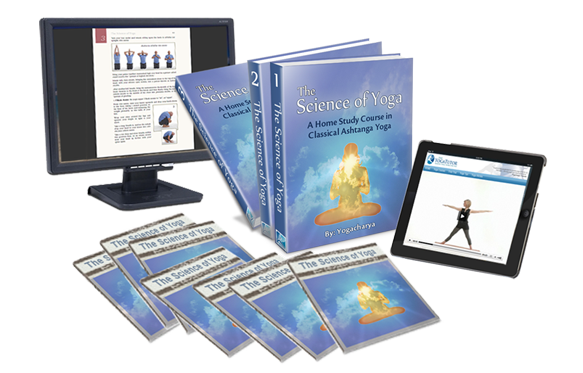[ Excerpt from The Science of Yoga, page 468 ]
In the Sanskrit language, dhanu means "bow," therefore this asana is called the "the bow pose." In performing it, the body assumes the shape of a bow with the arms being used like a bowstring.
A whole series of asanas and kriyas are built around this structure, which it is said, were a part of the training regiment for India’s ancient kshatriyan army of warriors -- used to reduce fatigue, relieve stiffness create firmness and resolve.
Technique
- Begin lying face downward in unmukha asana, with the arms relaxed along your sides.
- Bend the knees and reach backward to grab your ankles with your hands.
- With a deep and slow inhalation, lift the head, shoulders and upper torso as high off the floor as you can.
- On the exhalation, extend or raise the legs high off the ground, pushing the feet skywards.
- Breathe calmly and slowly, holding this position for 15-20 seconds in the beginning, working upwards to one minute with practice.
Note: In this position, use the arms as bowstrings, arching the spine as much as possible, making the navel region the primary point of contact with the ground. The legs should also be kept close together.
Note: Do not pull the heels in towards the buttocks. Extend the legs and push the feet backward and upwards, thereby creating the “tension” in the bowstring (arms).
Precaution: People with abdominal herniation should avoid this asana.
Effects and Benefits
In dhanur asana, the intra-abdominal pressure that is created has a tonic effect on the internal organs. It also compresses the dorsal (rear) side of the spine, at the same time stretching the anterior side of it. It makes the vertebral column resilient and elastic, prevents the premature calcification of the vertebral joints, and helps to correct abnormal curvatures and displaced discs of the spine.
This asana acts effectively on the ligaments, muscles, and nervous centres along the spine. This stimulation of the nervous centres of the spine (and mainly of the sympathetic nervous system) induces a state of euphoria in the practitioner. The massage of the solar plexus also helps to reduce anxiety.
The bow pose has many positive effects on some of the glands of the body too...
[Continued...]
DISCLAIMER:
The contents of this web page are intended for informational purposes only. One should not engage in any yoga practices based solely upon the directions given on this web page or any other page of this web site. Anyone atempting to perform any of the yoga exercises introduced on this website assumes full responsibility and does so at their own risk.
---------------------
NOTE: This yoga article is an excerpt from The Science of Yoga, an online yoga training program with streaming yoga videos and 600 pages of step-by-step yoga instruction.

"The Science of Yoga is a course worthy of
leather binding and an honored place in the
finest libraries in the world
... It is indeed a masterful work."
Dr. John Michael Christian
AwakeningWithYoga.com
Learn More About
The Science of Yoga Course
|







